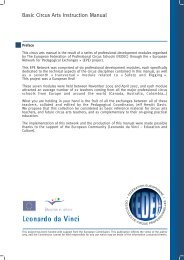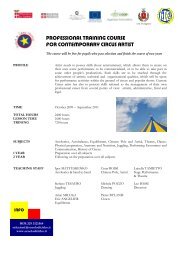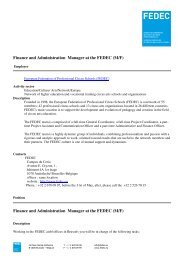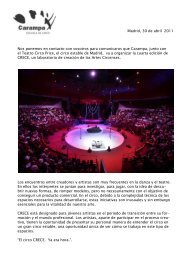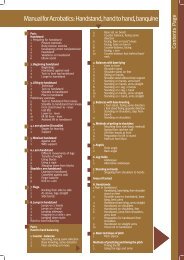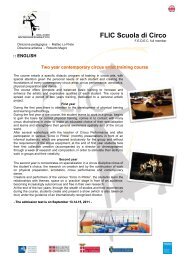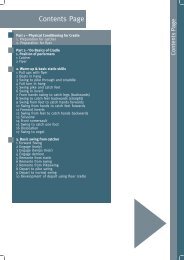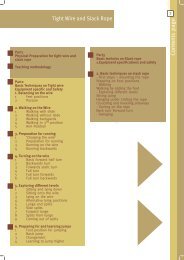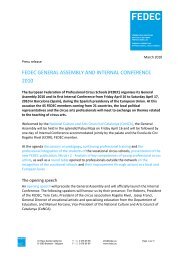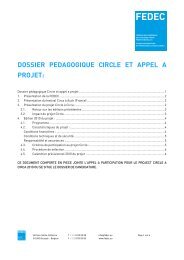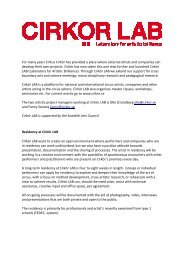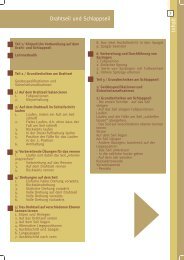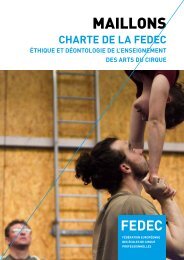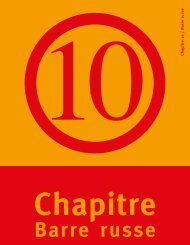InstructIon MAnuAL - Fedec
InstructIon MAnuAL - Fedec
InstructIon MAnuAL - Fedec
Create successful ePaper yourself
Turn your PDF publications into a flip-book with our unique Google optimized e-Paper software.
the high physical demands placed on the body<br />
of the circus artist provide a multitude of<br />
rich emotions which can be exploited artistically<br />
in order to find the correct artistic engagement, it is necessary to nurture<br />
the connections between the body and the environment which are the driving<br />
forces of the way we are.<br />
more generally speaking, the live performance can only “exist” through the<br />
relation with others and with the environment in which the artist evolves. the<br />
truth is in the tangible perception of the elements which make up a simple<br />
movement and its resonances. the space, aerial rigging and the directional<br />
intention of movement reinforce the artists’ self-awareness and their awareness<br />
of the environment and the performance space where they evolve.<br />
however, similarly to the psychomotor development of children which occurs<br />
in the playground, the creativity of the circus artist is strongly linked to concrete<br />
elements and to the exploration of the performance space, in the shape<br />
of equipment or scenography.<br />
the debate is still open on when to introduce a new piece of apparatus. Some<br />
think that training a specific discipline or piece of apparatus is necessary<br />
throughout the academic course in order to perfect the technique and that it<br />
is best to wait until after the course to embark on such an enterprise. others<br />
think differently and would be more daring.<br />
G. FASOLI<br />
© fedec 2011 CYR WHEEL<br />
51



